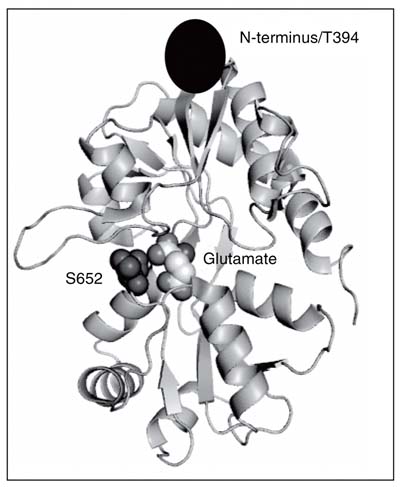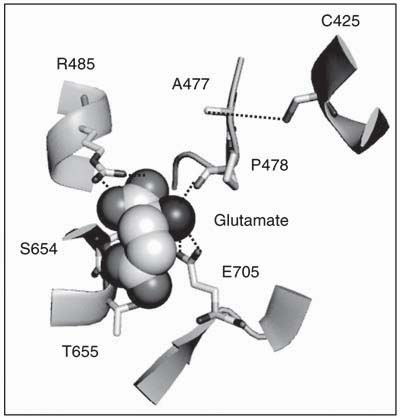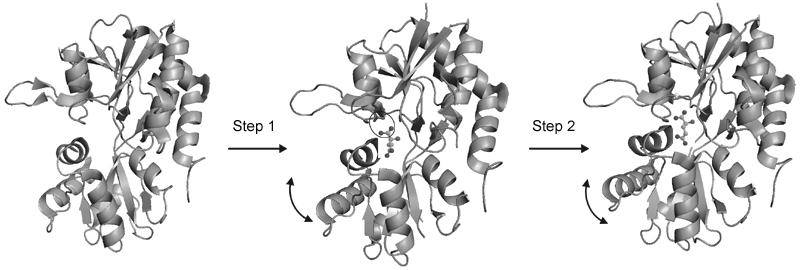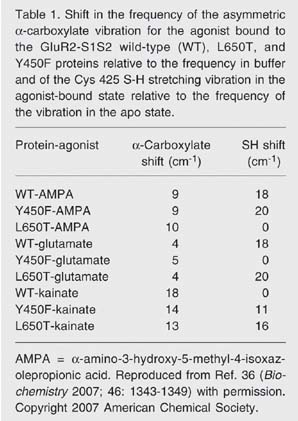Ionotropic glutamate receptors are major excitatory receptors in the central nervous system and also have a far reaching influence in other areas of the body. Their modular nature has allowed for the isolation of the ligand-binding domain and for subsequent structural studies using a variety of spectroscopic techniques. This review will discuss the role of specific ligand:protein interactions in mediating activation in the a-amino-3-hydroxy-5-methyl-4-isoxazolepropionic acid subtype of glutamate receptors as established by various spectroscopic investigations of the GluR2 and GluR4 subunits of this receptor. Specifically, this review will provide an introduction to the insight gained from X-ray crystallography and nuclear magnetic resonance investigations and then go on to focus on studies utilizing vibrational spectroscopy and fluorescence resonance energy transfer to study the behavior of the isolated ligand-binding domain in solution and discuss the importance of specific ligand:protein interactions in the mechanism of receptor activation.
Vibrational spectroscopy; Fluorescence resonance energy transfer; a-Amino-3-hydroxy- 5-methyl-4- isoxazolepropionic acid receptors; Agonist activation; Ligand binding





